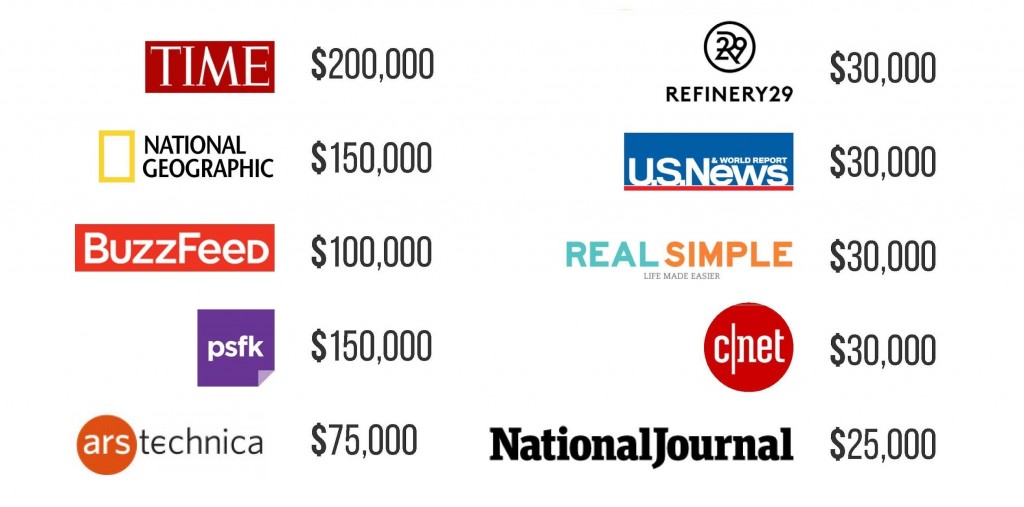Why Content Marketing For A Startup Will Make You Question Native Advertising

Unlike traditional marketing channels, content marketing isn’t just about bringing more eyeball and has more meaning to it than what is usually talked about. For starters, native ads cost much more than contemporary content campaigns, and are considered formidable because all the top brands opt for native. So what is ideal — native advertising or content marketing? Honestly, the question isn’t really that important. What matters is the fact which of the two could offer more eyeballs, pickups, social shares and better ROI.
From a startup standpoint, budget is critical and one can’t do ballpark marketing spends at all. Every dollar, every cent is valuable in order to stay ahead of the curve. Even though every startup enterprise has a very specific task or a business model to follow, it is imperative their marketing teams don’t lose sight of the big picture. Primarily in digital state of things, we need good organic visibility, authentic brand drivers, natural community engagement and trust in the long run. Native is basically paid promotion and has a limited lifespan, which can be weekly, monthly, quarterly, etc. depending on the campaign budget.
Sponsored content rates of top publishers
To be brutally honest, native advertising is like easy come, easy go. Sure if you have a budget, you can opt for native, but not every player can compete with a top brand. For instance, if Intel places native ads on a 90+ DA site like Buzzfeed, it doesn’t mean AMD & Qualcomm need to play hardball as well. This as a practice of looking at just a bunch of metrics, I don’t think is ever going to fly by when it comes to marketing for startups. Let’s take an unbiased idea-driven take on native vs content marketing (sourced from a report by Relevance).
Organic Visibility
Search behavior could be a deal breaker when it comes down to comparison between native advertising and content marketing. Take the most widely used native ad example — sponsored content, which easily is one of the most frowned upon term amid content marketers. They have a lot of limitations, as evident from empirical data and Google guidelines — they aren’t treated the same as editorial content. Since sponsored content or advertorials are paid (payment is exchanged between publisher and brand), they are treated as unnatural links by Google, and the publisher is required to provide “nofollow” links over dofollow. In the end, the brand (or a startup) ends up paying a lot for excellent inbound traffic but very limited organic benefits.
That almost effectively sums up native from a search engine friendly perspective. Let’s consider the stark contrast in the case of content marketing or for the fun of things, let’s call it editorial content. The process is very interesting — brands usually hire agencies to do their content marketing. Why? — because if they reach out to publishers directly, the process unnecessarily shifts into a native campaign, and the advertorial story repeats itself.
Content marketers operate differently — they reach out to bloggers and editors of major publications, pitch story ideas, develop relationships and get their content published. The process is immensely scalable and can draw in different content types, such as editorials, infographics, whitepapers, etc. All campaign objectives, budget considerations, market trends and content ideas can be easily incorporated depending upon the campaign duration. The links are editorial in nature, brands get all the search credits, and since it’s all by the book, we have a win-win situation. Something all startups fancy from the ground up.
Further, we can get multiple links from a single content marketing campaign as compared to just link (nofollow, explained above) from an advertorial. See the graphic below (sourced from HBR).
Brand Influencers
Speaking of online influence, it is a fairly relatable term and most people in the industry would vouch for it, hardly any doubts about that. Reason being instant brand-influencer-target audience connect, and a proven way of grabbing more eyeballs for the brand drivers. Native advertising sure can grab eyeballs, and most top publishers have a phenomenal track record in delivering traffic, social and other conversion numbers. Where they lack is accommodating a known face (the influencer) within the entire marketing profile, and the entire scenario ends up nothing but a paid ad. And boy, with so many paid promotions going on, how’d one know which is good and which isn’t? In addition this paradigm, there’s a lot of debate going on around native advertising being the solution to emergence of adblock favoring user behavior, but it’s getting hard to tell if it’s a good idea or bad.
Content marketers and influencers can work in tandem. The idea of having your product/service promoted by an individual who is considered a known figure in the industry, usually gets a thumbs up from everybody. People love to follow people who strut their stuff, and that’s why influencer marketing is so popular. Everything falls in place in place if one can get a known personality to write or mention about its service, especially in the case of startups. And the best thing, one doesn’t need to shell out a lot of money like in the case of native ad model. Real people drive authentic brand-audience connect, what more does a digital campaign need.
Community Engagement
Advertorials are boring, it is plain and simple. Nobody would connect well with veiled copy that only talks about how good a product/service is and why is it the next gamechanger. That is the biggest challenge with advertorials — it puts the brand in an awkward situation. People have a greater affinity towards all things natural, that is why they look for a spontaneous flow in an article, over bland advertising copy. Advertorials definitely get the obvious inbound traffic numbers, Facebook likes, retweets, etc. but it’s unnatural from a user’s perspective — because it’s paid.
Content marketing comes to the rescue, once again. Even if content campaigns fall short of the traffic numbers delivered by its native counterpart, studies have shown that overall engagement figures are better for the former. Good marketers strive to develop user personas and streamline their content efforts around the same. Such kind of flexibility is impossible in the case of advertorials, and since multiple user personas can be targeted in a single content marketing campaign, the results are equally reflective.
Let’s take an example — the newly introduced Apple Macbook laptop, positioned between Air and Pro, which has numerous applications and not just business folks. For instance, it can be used by corporates, students, working mothers, travelers, etc. Imagine the possibilities in designing a content marketing campaign with so many buyer personas, different kinds of bloggers (mom, travel, tech) and influencers. The math is simple – an advertorial can only be featured on one publisher site in a specified budget, whereas through content marketing we can split that budget for getting published on multiple online properties – bloggers, product reviews, influencers, etc.
Readers are definitely biased towards advertising vs. editorial content, and the numbers don’t lie. Both strategies stack up well against each other, native advertising works best at drawing higher click rates and other marketing channels, while content marketing is best at deriving better organic search value. In all fairness, the big question for a startup is their growth plan — native for branding and instant surge in visitor peaks, and content marketing for long term organic traffic objectives.
Categories
Recent Posts
- Boost Your Website’s Visibility with These Must-have B2B SEO Tools January 13, 2025
- Master Your Digital Strategy: Learn the 7 Types of SEO That Lead to High Rankings January 13, 2025
- 2024: A Year to Remember at AdLift! January 7, 2025
- How to integrate your SEO and paid search strategies to maximize efficiency and reduce CAC January 6, 2025
- SEO in 2025: Adapting to a Changing Search Landscape By Prashant Puri, CEO & Co-Founder, AdLift January 3, 2025
- Understanding the Google December 2024 Spam Update: What You Need to Know December 31, 2024
- Beware of Ongoing Scams Involving Fake AdLift Representatives December 31, 2024
- Facebook vs Twitter: Which Platform Wins for Your Marketing Goals? December 30, 2024
- The Art of Naming Conventions in Marketing Campaigns: Best Practices for Clarity and Success December 26, 2024
- Is Your Content Strategy Working for You — or Against You? December 19, 2024
Get
in Touch
Contact AdLift for a 360-degree marketing plan


